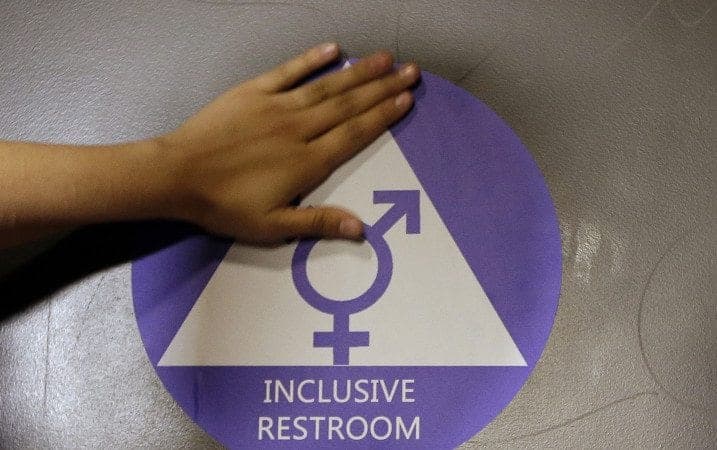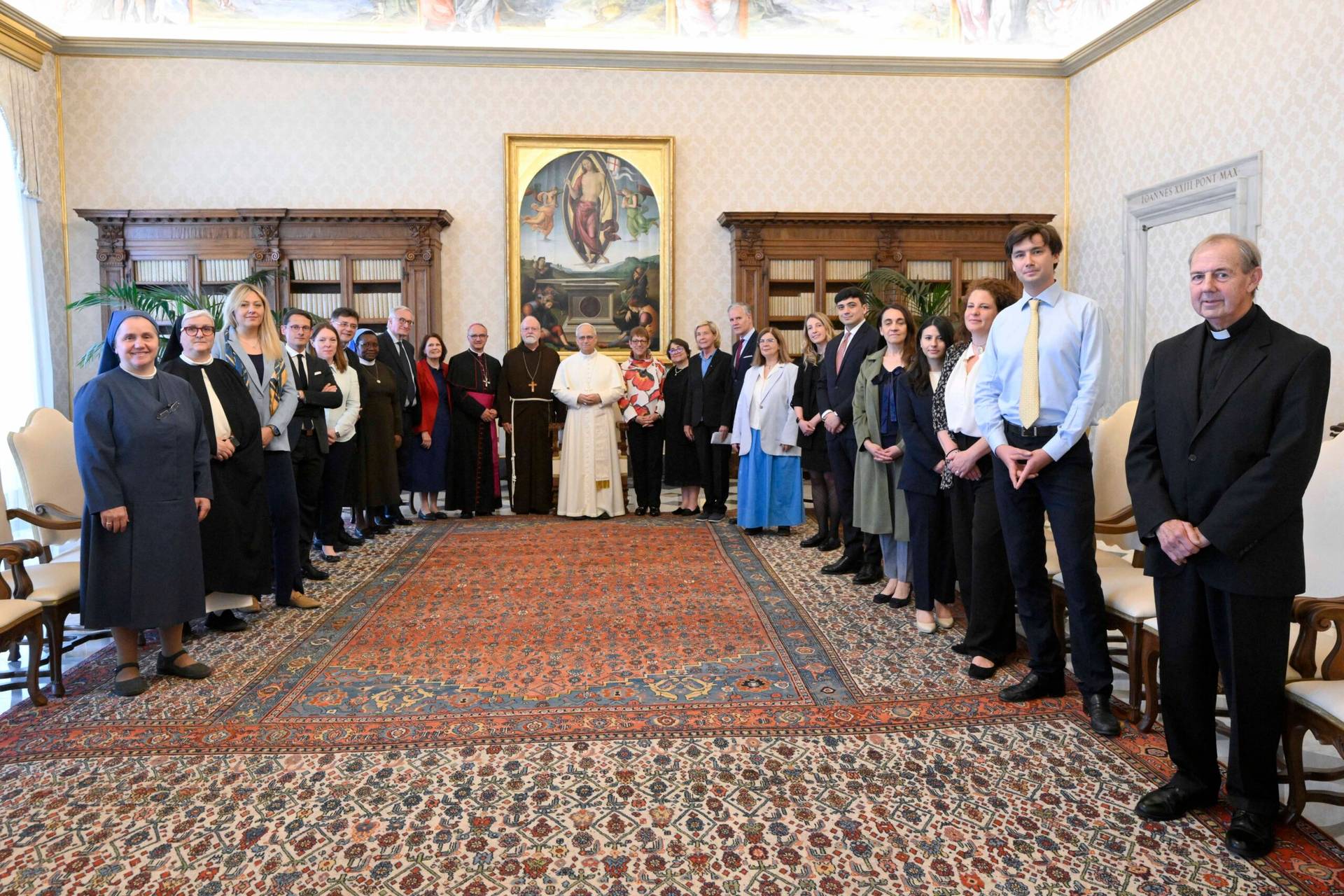ROME – Most of the time when Pope Francis speaks on a social or political concern, one understands immediately what he’s talking about. When the pontiff addresses poverty, for instance, or threats to the environment, or a “throw-away culture” that disregards the unborn, there aren’t many hoops to jump through to get the point.
Not so, however, when Francis addresses another frequent hobby horse: “Gender theory.”
Though that term has been in use in Vatican circles for at least the last quarter-century, reaching back to the era of St. Pope John Paul II, concern over it has intensified on Francis’s watch.
In a nutshell, it refers to theories which posit that male/female identities are not given in nature but rather socially and culturally constructed, and therefore can be revised based on one’s personal desires.
In an October 2015 general audience, Francis warned that with the rise of gender theory, “we risk going backward,” saying it “drains the world of affection and obscures the heavens of hope.” A year later, while returning to Rome after a trip to Georgia and Azerbaijan, Francis complained of what he called “indoctrination in gender theory” occurring in schools around the world.
Last October, in a session with the Pontifical Academy for Life, the pontiff said the “recently introduced hypothesis” of gender theory is “not fair,” and warned that it’s “likely to dismantle the source of energy that nourishes the alliance of man and woman and makes it creative and fruitful.”
Francis clearly thinks there’s something worrying, and if there’s one thing Rome as a company town knows how to do, it’s to pick up on it when the boss is worried. Thus it’s little surprise that a March 12-13 conference at Rome’s Opus Dei-run Santa Croce University on “The Right to Education and to Teaching” included a paper on gender theory, during a panel chaired by German Archbishop Georg Gänswein, the closest aide to Pope emeritus Benedict XVI and the Prefect of the Papal Household for Francis.
In the wake of the presentation, two things seemed clear. The first is that it was a deft presentation of the state of affairs in Europe, and the Church’s current thinking about it. The second was that for the reflection about gender theory to go forward, the conversation eventually may need to be broadened.
The paper was prepared by Vincenzo Turchi, a professor of canon law and ecclesiastical law at the University of Salento in southern Italy, though it was read on his behalf on March 12 after Turchi suffered an accident and was unable to travel.
In general, when Vatican personnel over the years decry the rise of “gender theory,” they’re not really referring to a specific theory associated with a given thinker. Instead, they mean a broad intellectual and cultural push, which they see as posing three interrelated risks:
- Eroding the idea that sexual identity and orientation are given in nature, proposing that orientation, and, by extension, sexual behavior, isn’t bound by objective moral norms but rather the result of contingent historical and cultural choices.
- Encouraging the state to promote such a vision of gender in schools, thereby threatening the right of parents to be the primary educators of their children.
- Under the guise of avoiding discrimination on the basis of sexual orientation, stigmatizing traditional religious and moral views and ending up becoming itself a form of discrimination.
All three of those points were struck in Turchi’s presentation on Monday.
Gender theory, Turchi said, is based on “well-known philosophical and anthropological concepts,” beginning with “the primacy of culture over nature.” According to this view, he said, natural data are seen as “marginal,” so sexual differences are “inessential and changeable,” to be shaped on the basis of “individual self-determination.”
Today, Turchi said, gender theory is being introduced in schools in various ways, including not only courses in sexual education but in many other subjects, such as a controversial citizenship program in Spanish primary schools.
Though often presented as a way of preventing discrimination and bullying against LGBTQI youth in schools, Turchi argued, materials shaped by gender theory actually go much further.
“It’s not limited to presenting principles of non-discrimination, but it anticipates marriage for people of the same sex, or registration for same-sex couples, as well as adoption rights for them and so on,” he said.
“It’s not the same as equal rights for same-sex people,” Turchi wrote.
Turchi then reviewed cases from Spain, France and Italy to illustrate what he sees as the dynamics of implementing gender theory in European schooling today. The French case pivoted on a teaching program called ABCD of Equality program, jointly developed by the Women’s and Education ministries and launched in September 2013.
Designed to help children overcome negative gender stereotypes, critics say in reality it blurred male/female distinctions. In acting out fairy tales, for instance, boys were encouraged to play the part of Little Red Riding Hood, and girls the part of the wolf. In looking at the Renoir painting Madame Charpentier et ses enfants, the government suggested teachers point out that little boys, as well as little girls, used to wear dresses, or that King Louis XIV wore high heels and ribbons.
Schools selected to pilot the program were targeted by angry parental protests and boycotts, including many Catholic parents, who asserted the state was overstepping its bounds, wading into territory of values and identity that belong to families and parents.
Turchi cited analogous developments in northern Europe, including the adoption of “gender-neutral” pronouns in Swedish schools and the adoption of sexual education materials in Denmark that include the possibility for guest speakers such as a transsexual prostitute, without the possibility that parents could opt to hold their child back from that lesson.
Surveying the landscape, Turchi said, there’s a sense of “bitter disappointment,” because in discussing gender theory, “we’re on very slippery ground.”
“It’s being spread without speaking about it openly, inserted into legislation and then into school materials on other subjects,” he said. “Anyone who objects is labeled as racist or discriminatory.”
“Authentic justice today,” he said, “may require swimming against the tide.”
As a footnote to the March 12 discussion, it seemed clear that resolving the tensions posed by gender theory involves a complicated intersection of law and policy, and probably will require having everyone with a stake in the discussion sit down and try to figure things out.
In that regard, it was striking that the lineup for the conference not only was composed almost entirely of male clerics, but it didn’t seem to include anyone who might be sympathetic to some of the ideas behind gender theory. Probably this wasn’t the venue, but one suspects that eventually, that conversation will have to take place.















